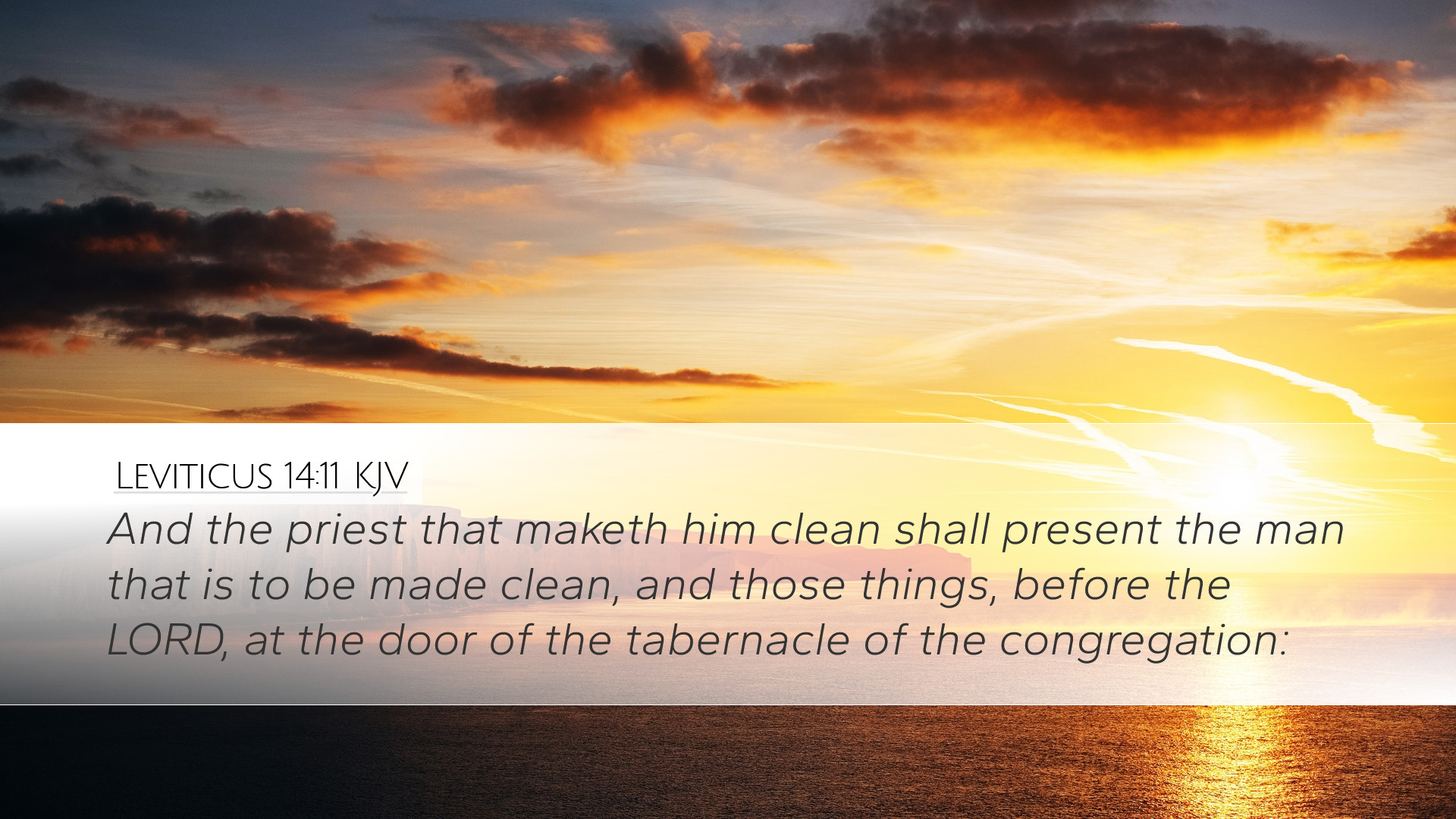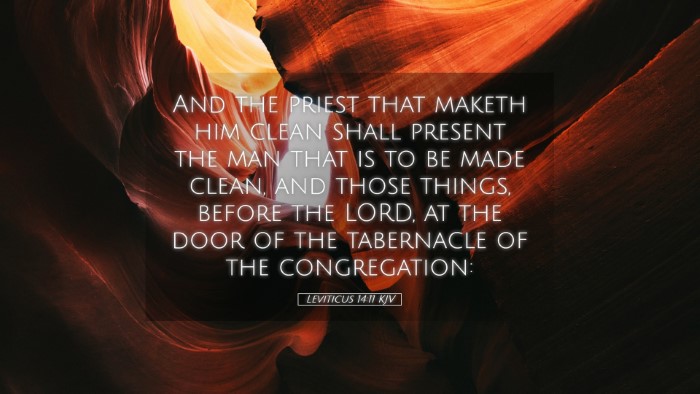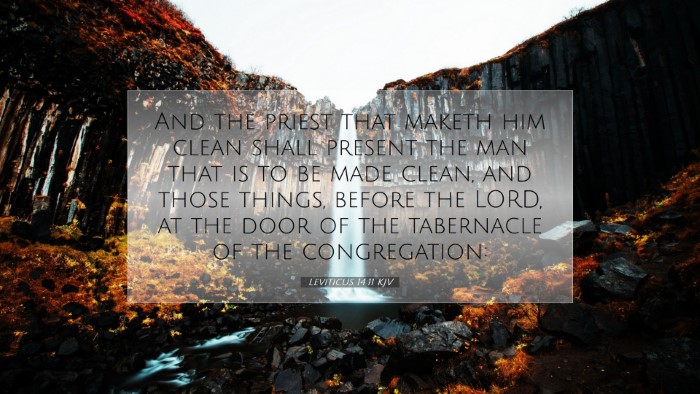Commentary on Leviticus 14:11
Verse Analysis
Leviticus 14:11 states: “And the priest that maketh him clean shall present the man that is to be made clean, and those things before the LORD, at the door of the tabernacle of the congregation.” This verse is situated within a larger framework that discusses the purification process for individuals afflicted with leprosy and other skin diseases. The act signifies restoration not only to health but also to the community and the worship of the Lord.
Contextual Understanding
The rituals surrounding leprosy, found primarily in Leviticus chapters 13-14, highlight the importance of holiness within the Israelite community. Leprosy was not merely a physical ailment but also a spiritual one, often linked to sin and defilement. As noted by Matthew Henry, the laws regarding the leprous individual emphasize the necessity of divine intervention for righteousness and restoration.
The Role of the Priest
Significance of the Priest
In this verse, the priest plays a crucial role. Albert Barnes notes that the priest was not merely a facilitator of rituals but the mediator between the afflicted and God. Through the priest’s actions, the individual’s return to community fellowship is secured:
- Spiritual Leadership: The priest embodies spiritual authority, guiding the community in their understanding of the divine holiness required for fellowship with God.
- Restoration: The emphasis on the priest's involvement signifies that healing and cleansing are acts of divine grace, requiring acknowledgment and response to God’s covenant.
The Cleansing Ritual
The cleansing ritual involves various sacrifices and offerings, culminating in the individual being presented before the Lord. Adam Clarke highlights the deeper theological implications of this ritual, wherein the afflicted is restored not only physically but spiritually:
- Symbol of Redemption: The process reflects the redemptive work of God, paralleling New Testament themes of atonement where Christ cleanses from sin.
- Community Restoration: Cleanliness was essential for participation in worship, representing the necessary preparation for coming before God’s presence.
Theological Implications
Leviticus 14:11 illuminates various theological themes pertinent to pastors and theologians today:
- The Holiness of God: The requirement for purification indicates the depths of God’s holiness and the impossibility of approaching Him in uncleanness.
- Role of Christ: New Testament believers see parallels in Christ's ministry, wherein He fulfills the anticipatory elements of these Old Testament rites.
Implications for Ministry
For pastors and ministry leaders, this verse and its context underline important pastoral responsibilities:
- Guiding in Restoration: Just as the priest was involved in the restoration process, modern church leaders must facilitate spiritual healing.
- Emphasizing Community: The communal aspect of worship and ritual cleansing serves as a reminder of the importance of community in spiritual health.
- Providing Hope: The narrative emphasizes the hope of restoration, encouraging ministry leaders to foster environments where healing is possible.
Conclusion
In summary, Leviticus 14:11 encapsulates profound truths about societal and spiritual restoration through God’s ordained processes. The priest’s role reflects divine mediation, and the cleansing ritual serves as a prototype for understanding purification in the Christian faith.
This passage invites careful reflection on themes of holiness, community, and grace, allowing pastors, students, and theologians to draw practical applications from ancient texts for contemporary faith living.


